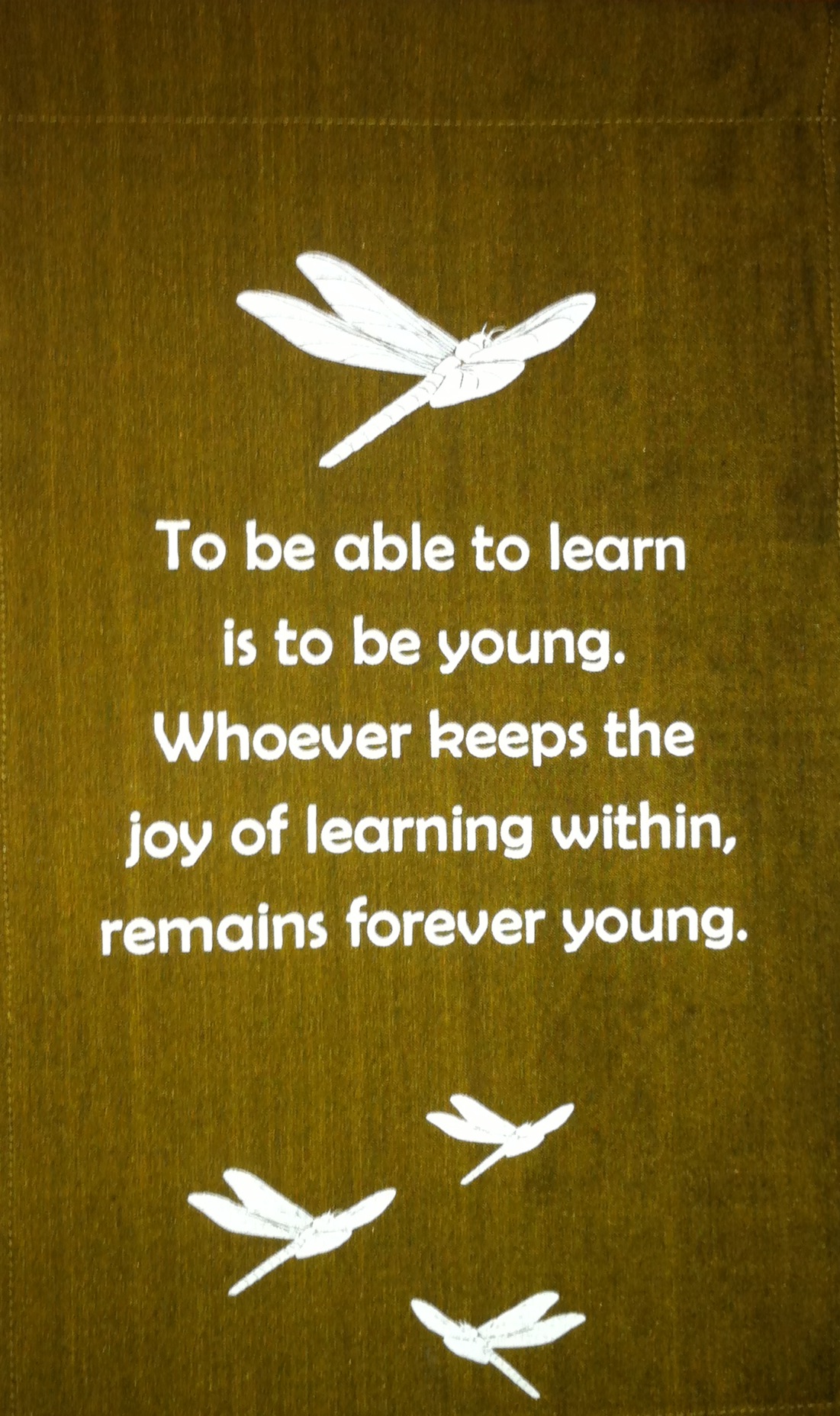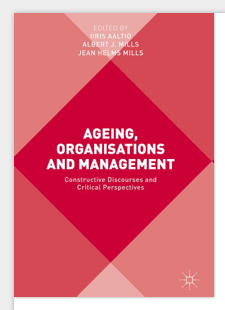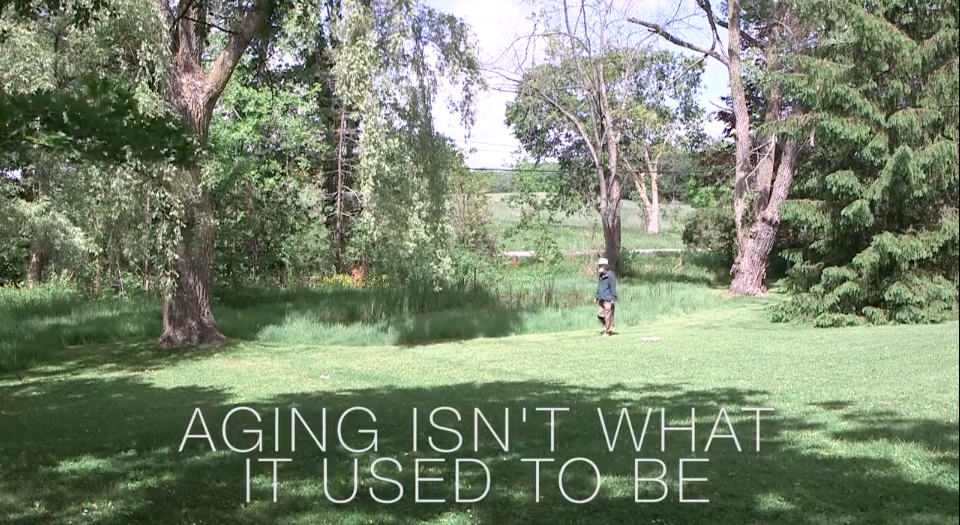Yearly Archives: 2017
New Beginnings
Posted by suzanne on Dec 31, 2017
Happy New Year. The best time for new beginnings is now as the new year begins.
New mindset. New shift. New direction. Redirection.
Congratulations on your retirement. Now it’s time to redirect.
Congratulations on intentionally contemplating your future retirement.
Redirection…because you don’t know what is just around the corner.
The time is ripe to figure out your next challenge and your next chapter.
Vital engagement. The time is now.
Three Tips for Mentoring
Posted by suzanne on Nov 28, 2017
People are sometimes interested in mentoring opportunities in their community. A mentor is someone with experience, knowledge and skill who provides guidance to someone. A mentor helps others develop and grow to their full potential.
Mentoring may be part of your redirection journey.
Being a mentor is a powerful role because of the possibility of having a large influence on someone and assisting them in a meaningful way. It is very exciting to be a part of someone else’s success and achievement.
Where can mentoring opportunities be found?
It takes time to research and find mentoring opportunities. Here are three tips.
1. First, assess what skills and expertise you have to provide to someone. Where will you be most useful and valuable as a mentor? Find organizations and associations where you can use your skills and expertise. Contact them and find out more about what they do and how they develop and train new members or new hires.
2. Mentoring can provide benefits to both the mentor and protege. It is a teaching and learning opportunity for both individuals. While the mentoring relationship is mutual, usually the emphasis is placed on what the proteges gain. In fact, a common bit of wisdom is that mentors walk three steps behind and keep their protege in the limelight. This is a lovely way of emphasizing the importance of helping the protege to shine. In other words, mentors receive accolades for their skill at guiding, counselling and advising while cheering and applauding the protege. In addition, outcomes related to protege achievement are usually measured in a formal mentoring program. More recent work has begun to examine mentor outcomes and goals. This is an interesting direction for research.
3. It may be possible to leverage a mentoring role into a paid opportunity. This may take time and negotiation; however, sometimes an organization requires a teacher/mentor in a formal role to guide and nurture skills and knowledge development in the younger generation. If you find the right fit and prove your value to an organization, you might find this type of role both personally and professionally rewarding.
Lifelong Learning
Posted by suzanne on Nov 10, 2017
 You are never too old to learn. In other words, you never stop learning. There is something new to learn everyday.
You are never too old to learn. In other words, you never stop learning. There is something new to learn everyday.
Moreover, the benefits of learning are many. Lifelong learning opportunities provide social connection, mental stimulation and a sense of purpose.
Learning helps people to expand their horizons. Learning fuels personal growth and development. Furthermore, advances in personal development stimulate learning.
Every community needs to provide lifelong learning options for mature residents. In some areas and locations, there are lifelong learning and Third Age Learning Groups. There are also learning programs offered through municipal park and recreation centres, school boards, seniors’ centres and other community organizations. Furthermore, in Canada, book clubs are a favourite way to learn and connect with others.
Learning is an important later life pursuit. Intellectual and personal growth are a critical for healthy aging.

Category: Career, Lifelong Learning
6 Tips for Enhancing Motivation
Posted by suzanne on Nov 5, 2017
People sometimes ask me, “Are there ways to enhance motivation?” It can be difficult to keep trying to find new work opportunities or your ‘redirection’ when there are significant barriers and obstacles in the way.
It is important to find ways to motivate yourself to reach toward your goals and objectives. What are the best ways to enhance motivation?
Here are six tips:
- Set your Ikigai. Ikigai is pronounced ‘ee-kee-guy’ and is your reason for being, or your reason to get up in the morning. This is a Japanese term that I learned after reading Neil Pasricha’s book The Happiness Equation. An Ikigai is like the ‘la raison d’être’ in French. Write out your Ikigai. Put it where you can see it first thing every morning.
- Set small, measurable goals or objectives. Write them down. Then, track your progress on a weekly basis.
- Choose a mantra. Use a mantra, motto or quote that connects to your goals and speaks to you. The mantra can motivate and help spur change. It points to where you are going. Pick a mantra that makes you want to reach your goals and keep moving forward.
- Select a touchstone, an image to ground and inspire you. Choose a visual image or object that makes you want to keep striving towards your goals.
- A social network can be a good source of support and encouragement. Share your goals with your family and closest friends, or more publicly with colleagues, friends, neighbours and your broader social circle or network.
- Get out and spend time everyday with nature. This regularly creates reflective time in your life to help you design, review and evaluate goals and to think about your objectives.
Good luck!

Category: Aging, Career, Economic Issues, New Retirement, Redirection, Work
If not now, then when?
Posted by suzanne on Oct 12, 2017
Incredible motivation, or lack thereof. Motivation is a great strength. It makes a big difference when working towards goals and objectives. As with all things in life, success and achievement take work. High motivation makes it happen.
Searching for the ‘next challenge?’ Strong motivation can be an asset when making this transition – an occupational redirection or change in your life. It takes work to redirect and the pathway forward may not be clear.
Motivation is key
Let’s be honest. Nothing is easy. Work is involved in redirecting. Forethought and effort are required. It is possible to lose motivation, or temporary ‘misplace’ it. Sometimes motivation is ‘low’ or lacking. It is a huge downfall when motivation is absent. This is when motivation must be recaptured.
At other times, success comes more slowly than expected; therefore, motivation needs to be sustained. Transition takes time. In addition, it is not easy to maintain motivation when the going gets tough. Everyone needs a push forward now and again. Using a mantra is one way to increase motivation. The Mottos to Motivate in the image above may help when choosing a new mantra. A motto or mantra can help people to reach toward their goals and keep moving forward.
To stimulate motivation, it often helps to look back on previous accomplishments. Once you have reached a certain age, it is possible to gain greater perspective and realize that many obstacles and hardships have already been overcome in life. This indicates how resilient people just keep trying. They eventually achieve goals and objectives through hard work and perseverance. It is possible to look to previous experiences and see how resilience made it possible to overcome barriers. Being a resilient person helped to keep you motivated and moving forward.
Today, it is important to take steps towards your redirection.
It is up to you. If not now, then when?
I will discuss additional tips for motivation in my next post.

Category: Active Engagement, Aging, Health and Wellness, Life and Living, Lifelong Learning, New Retirement, Work
 Post Tagged with Aging, Aging Labour Force, Engagement, Health, Learning, Meaningful-Later-Life-Work, Motivation, Redirection, Resilience, Well-being
Post Tagged with Aging, Aging Labour Force, Engagement, Health, Learning, Meaningful-Later-Life-Work, Motivation, Redirection, Resilience, Well-being Talent Management and Later Life Career
Posted by suzanne on Sep 30, 2017

Talent Management and Career Development of Older Workers: I discuss this in Chapter 6 of this new book.
The workforce is aging. This is a critical business issue and organizations are paying closer attention.
With this new demographic shift in the workplace, the talent management and career development of mature workers must be redesigned. These are two new emerging and interconnected issues that are discussed in my latest book chapter.
I co-authored Talent Management and Older Workers: Later Life Career Development, Chapter 6 of Ageing, Organisations and Management, with Victoria Rougette (see pages 113 – 140). Here is a short description of the chapter:
“The Canadian workforce is ageing and there is greater labor force participation among older adults. These unprecedented shifts require business and industry to examine the talent management of older workers while considering their career development. In fact, a top strategic issue facing organisations is the talent management of the ageing workforce such as the recruitment, retention, training and development, and career progression of older workers. This chapter examines the career development of older workers and talent management policy in organisations through a critical lens in order to shift the discourse surrounding work and ageing. This approach can support the labor force participation of older workers and their career development needs while also strengthening talent management within organisations.”
The new book, Ageing, Organisations and Management, edited by I. Aaltio, J. Helm Mills and A. Mills and published by Palgrave Macmillan, is now available.
This edited book examines business, organizations and work with a focus on aging. The chapters are written by scholars from Europe, North America and Australia. Other chapters are entitled: Age Management in Organizations: The Perspective of Middle-Aged Employees; Reifying Age-Related Employment Problems Through the Constructions of the “Problematic” Older and Younger Worker; and Old Age as a Market Advantage: The Example of Staffing Agencies in Sweden.

Category: Aging, Aging Workforce, Business, Career, Economic Issues, Work
Movers and Shakers and Best Breakfast Choices
Posted by suzanne on May 4, 2017
 People share with me that they want to continue to be active and engaged in the community. They want to create a retirement lifestyle that they can enjoy for the next few decades. They envision and anticipate spending time in volunteer or paid work roles, engaged in travel or pursuing leisure and recreation activities during their retirement. Some individuals expect to accomplish all of the above, which is wonderful.
People share with me that they want to continue to be active and engaged in the community. They want to create a retirement lifestyle that they can enjoy for the next few decades. They envision and anticipate spending time in volunteer or paid work roles, engaged in travel or pursuing leisure and recreation activities during their retirement. Some individuals expect to accomplish all of the above, which is wonderful.
Being active and engaged requires good energy to start the day.
With active living, it is especially important to select foods that are healthy and nutritious. In addition, individuals want to take better care of themselves.
Which foods provide good nutrition? After discussing nutrition and diet with my colleague Sandra Crowe, Registered Holistic Nutritionist, we decided to create a joint video blog about healthy breakfasts that individuals can choose for an energetic day. This will assist people who are eager for knowledge and information conducive to an active lifestyle and increased healthspan.
View the video to learn more about the ways to emphasize high protein and low carb healthy breakfast options.
Movers and Shakers and Healthy Breakfasts
It is important to have enough energy for the day. It all starts with a healthy breakfast.
You can sign up for Sandra’s blog at http://www.fitkitchendiva.com

Category: Active Engagement, Aging, Health and Wellness, Life and Living, Longevity, New Retirement
Seven Dimensions of Active Aging
Posted by suzanne on Apr 30, 2017
Thanks to our aging population, increasing numbers of people are reaching mid-life. They have made it to a certain age and realize they need step it up a bit to maintain their health. Some decide they need to work harder in order to become healthier.
In fact, people are paying more attention to the benefits of healthier, more active lifestyles across the lifespan. It is possible to improve health by working at it. The objective is for people to have not only increased lifespans, but increased healthspans. The approach of using the seven dimensions of active aging can help.
The seven dimensions of active aging is a model for health and wellness. I often share this model when people are interested in learning more about health, wellness and aging and want to understand how to live fuller, healthier lives. This model helps people to design a rich, well-rounded lifestyle and set goals for health and wellness.
The seven dimensions of active aging are the key areas to be aware of for healthy aging in order to improve the quality of life as individuals age. The seven dimensions of health and wellness are:
- Cognitive – brain health
- Physical – body fitness and sexuality
- Psychological – emotional health
- Social – relationships and social connections
- Spiritual – divine, psychic and transcendent
- Occupational – vocation, work and calling
- Environmental – the natural and build world
With this holistic approach to health and wellness, these dimensions are interconnected to create the whole person and their life. Being active and engaged helps individuals by stimulating at least one, and often, many of these dimensions. It is important to live a balanced lifestyle so that each of these dimensions are developed or stimulated. This is what individuals strive to achieve.
The Canadian population is aging and there are more older adults than previously. People are also living longer today than ever before. They want to live longer and healthier lives. They want to maintain or even improve their health and are paying more attention to health and wellness in order to achieve health-related goals and objectives. Healthspan is very important. The seven dimensions provide a broad perspective of the best ways to think about health and wellness. In addition, the dimensions indicate the areas for improvement in order to live healthier, more satisfying lives.

Category: Aging, Aging Population, Health and Wellness, Life and Living, Longevity, Relationships, Work
 Post Tagged with Aging, Aging Population, Education, Engagement, Health, Healthspan, Lifespan, Seven Dimensions
Post Tagged with Aging, Aging Population, Education, Engagement, Health, Healthspan, Lifespan, Seven Dimensions Freedom of R & R, or to Continue Working
Posted by suzanne on Apr 12, 2017
There is a realignment of work and retirement in society as the population ages. It is a growing trend. Older adults are continuing to work past traditional retirement age.
CBC’s The National followed a couple of Canadians as they reflected on their decision to keep working into their later years. They found work opportunities for their ‘next act’ that help generate an income and maintain their lifestyle. Furthermore, their work is personally fulfilling and meaningful to their community.
Benefits go beyond the paycheque; working keeps people active and engaged. It was also nice to hear another perspective on the benefits of hiring mature workers.
I coined the term redirection to refer to the new stage of career as people transition into new pursuits and occupation to stay engaged and continue to work. Redirection is an alternative to retirement. It is an exciting time of life. New possibilities are investigated and explored. Older adults discover that their skills and competencies are transferable. My new documentary film explores five people’s experiences with redirection.
CBC News discusses the trend towards delayed retirement. Provinces like Nova Scotia and New Brunswick are already rethinking and implementing policy to address this new trend.
It is time to rethink government policy to consider the ways people are and can work longer and what this means for social structures and institutions in Canada.

Category: Active Engagement, Aging Population, Aging Workforce, Career, Economic Issues, Family, Health and Wellness, Intergenerational, Life and Living, Longevity, New Retirement, Relationships, Social Policy, The Redirection Project, Work
 Post Tagged with Aging Population, Business and Seniors, Documentary Film, Employment, Experienced Workers, Finance and Economics, Health, Income and Lifestyle, Later Life Work, Mature Workers, Mature Workforce, Meaningful-Later-Life-Work, New Retirement, Redirection Project, Retirement Trends, Skills, The Redirection Project
Post Tagged with Aging Population, Business and Seniors, Documentary Film, Employment, Experienced Workers, Finance and Economics, Health, Income and Lifestyle, Later Life Work, Mature Workers, Mature Workforce, Meaningful-Later-Life-Work, New Retirement, Redirection Project, Retirement Trends, Skills, The Redirection Project Older Workforce, Aging Consumers
Posted by suzanne on Feb 10, 2017
The population is aging in Canada as the baby boomer generation approaches and enters their later years. In a similar vein, the Canadian labour force is aging.
The aging population and labour force affect the Canadian economy. Policy makers, economists and government are concerned about how this will impact the economy.
Canada’s population growth is dependent upon the fertility rate, death rate and rate of immigration. Fertility rates have decreased over the decades as women have fewer children. Canadians are living longer. Immigration policy in Canada aims to bring more people into the country who can contribute to productivity and growth and compensation for the low fertility rate to keep the economy strong.
However, government, policy makers and economists do not fully recognize that older workers are eager to work and continue to work, in order to contribute to their communities. Older workers are skilled and experienced workers. They have communication, interpersonal and problem solving skills and have developed their ability to work with others. All of these skills are essential in the workplace today.
Organizational Level
As the populations ages and the workforce becomes older, all levels of society are impacted by demographic change. Importantly, this impacts organizations who are worried about a chronic labour shortage resulting from a rapidly aging population. Organizations have identified skill shortages in different roles across various industries. This is a top priority for business leaders.
Around the globe, other countries are innovating to address these concerns. These countries believe that the best way to adopt a successful aging strategy is to realize that aging is an opportunity.
One example is Japan, where policy makers have been steering the growing number of healthy 60- and 70 year olds away from retirement into work. These mature workers are taking on work roles and this makes them productive members of society. They hold jobs ”that otherwise would be impossible to fill as the population shrinks.” 1
Furthermore, an entrepreneurial focus on the aging demographic, with products and services to support aging, ensures that aging is a benefit that broader society can reap.
Although consumer spending growth overall is weak in Japan, economists at UBS Securities there say they believe the expansion of the senior market could more than offset any declines that come from a shrinking population, at least for a time.2
For Japan, the way forward is clear. For more, visit Aging Gracefully in the Wall Street Journal.
Footnotes:
1,2Schlesinger, J. M. & Martin, A. (2015). Entrepreneurs are exploring robotics and other innovations to unleash the potential of the elderly. Aging Gracefully: Graying Japan Tries To Embrace the Golden Years.

Category: Aging, Aging Population, Aging Workforce, Business, Economic Issues, Longevity, Services for Seniors, Social Policy, Work
 Post Tagged with Aging Labour Force, Aging Population, Employment, Finance and Economics, Mature Workers, Mature Workforce
Post Tagged with Aging Labour Force, Aging Population, Employment, Finance and Economics, Mature Workers, Mature Workforce 









